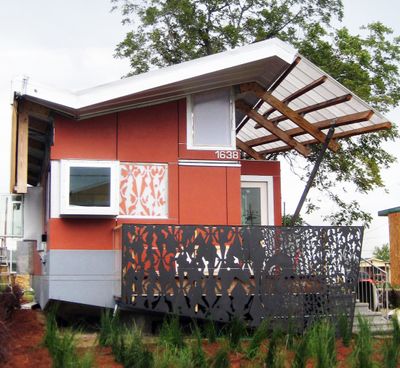Home is built to ride New Orleans’ floods

NEW ORLEANS – A house capable of floating atop rising floodwaters made its debut Tuesday in New Orleans alongside more than a dozen other homes built through actor Brad Pitt’s Make It Right Foundation.
Called the FLOAT House, the unique home aims to answer the challenge posed by the Big Easy’s flood risk, starkly illustrated by the rising waters of Hurricane Katrina in 2005.
The home was shipped in pieces from Los Angeles, where it had been constructed on UCLA’s campus.
The dwelling was designed by Morphosis Architects under the direction of Thom Mayne, a professor at UCLA. Mayne said it’s the first of its kind to be permitted in the United States.
It is long and narrow like the traditional New Orleans shotgun home and sits on a raised 4-foot base. It also has a front porch. But the home is contemporary in design, with sharp angles and energy efficient features like solar panels and a roof designed to capture and recycle water.
No one lives there yet, but a family could buy the home and move in as early as next month, said Tom Darden, executive director of Make It Right. The group says it went through the local zoning and permitting channels before erecting the 1,000 square-foot, two-bedroom house on the site.
Mayne said the Morphosis floating house technology was developed and is in use in the Netherlands, where architects are working to address rising sea levels expected with climate change.
In case of a flood, the base of the house acts as a raft, allowing the home to rise on guide posts up to 12 feet as water levels rise.
The home’s base is a high-performance chassis made from polystyrene foam coated in glass fiber-reinforced concrete. It houses the essential equipment to supply power, water and fresh air.
While not intended for occupants to remain inside during a hurricane, the structure is designed to minimize catastrophic damage and preserve the homeowner’s investment, Mayne said.
The floating home should also allow residents to return within days of a hurricane or flood, Mayne said.